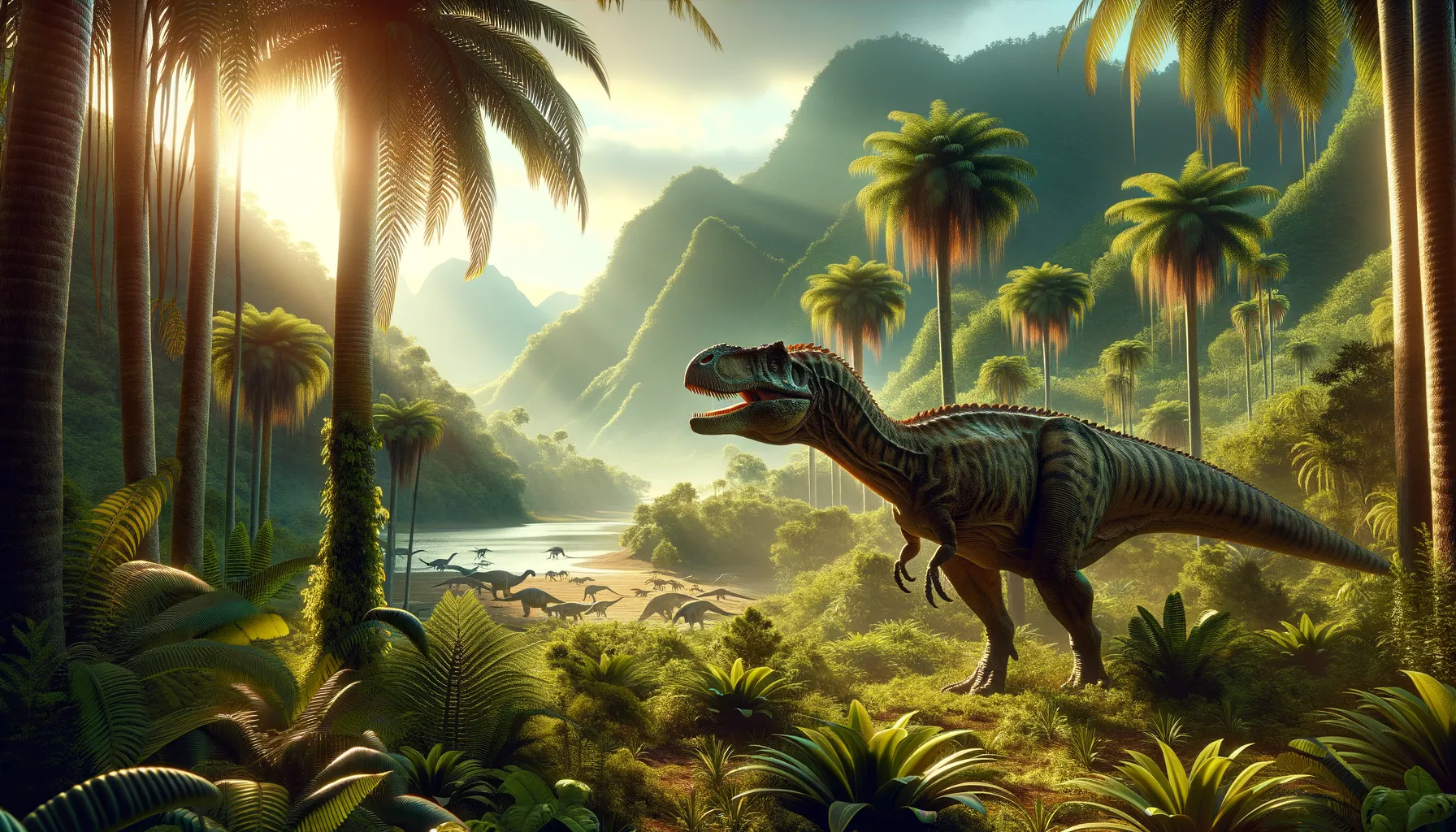
Kamuysaurus
Japan's Cretaceous plant-eating giant!
Period
Cretaceous
Length
Measured up to 8 meters long.
Height
Stood approximately 2.5 meters tall.
Weight
Weighed around 5 tons.
Kamuysaurus is a genus of hadrosaurid dinosaur that roamed the earth during the Late Cretaceous period, approximately 72 million years ago. As a plant-eating dinosaur, it thrived in what is now modern-day Japan. Discovered in Hokkaido, it is recognized for its distinctive cranial features and robust build. Kamuysaurus offers significant insights into dinosaur evolution and migration patterns, bridging a gap between Asian and North American species.
Diet
Kamuysaurus was an herbivore, mainly feeding on plants. It likely consumed a variety of vegetation like conifers and ferns, utilizing its specialized teeth for grinding.
Hunting
As a herbivore, Kamuysaurus did not hunt. Instead, it foraged for plants in its lush, forested environment and used its efficient grinding teeth to process tough plant material.
Environmental challenges
Kamuysaurus lived in areas that were prone to seasonal changes, including periods of abundance and scarcity. It had to navigate and adapt to variations in food availability. Additionally, predatory threats from carnivorous dinosaurs required vigilant social behavior for protection. Staying in herds could have been a strategy to mitigate these threats and challenges.
Speed
Relatively slow herbivore.
Lifespan
Lived up to about 70 years.
First discovery
First discovered in Japan in 2003.
Fun Facts
- Kamuysaurus means 'God of the dinosaurs' in the language of Japan's indigenous Ainu people.
- It was discovered in Hokkaido, Japan, making it one of the most complete dinosaur fossils found in the country.
- Kamuysaurus lived approximately 72 to 70 million years ago during the Late Cretaceous period.
- This dinosaur was a type of hadrosaur, commonly known as a duck-billed dinosaur due to its flat, duck-like snout.
- Kamuysaurus was herbivorous, munching on a variety of prehistoric plants.
- The fossil remains suggest it measured about 8 meters (26 feet) in length, making it quite a sizable dinosaur.
- Scientists believe Kamuysaurus may have lived near coastlines, possibly indicating it had a semi-aquatic lifestyle.
Growth and Development
Kamuysaurus, like other hadrosaurs, would have grown relatively quickly, reaching maturity within a few years. This rapid growth would have helped it evade predators. Social structures might have existed within these groups to aid in communal care and protection of the young. Juveniles likely stayed close to adults for learning and safety.
Habitat
Kamuysaurus inhabited coastal and river floodplain environments along what is now the Japanese archipelago. These areas would have provided abundant vegetation and forests as feeding grounds. The rich ecosystem, abundant with plant life, supported a substantial hadrosaur population. Seasonal climate variations required adaptation for survival throughout the year.
Interaction with other species
Kamuysaurus probably interacted with various species, including plant-eating species and potential predators. Its relations with other herbivores could have involved competition for food resources. Predatory species, like theropods, posed a threat, influencing its defensive behaviors and social structures. Symbiotic relationships possibly occurred with other smaller creatures aiding in seed dispersion.
Natural lifespan
Kamuysaurus had a natural lifespan of several decades.
Reproduction
Kamuysaurus likely reproduced by laying eggs, which they would have buried in sandy or soft soil for incubation. Nests might have been placed in secure, communal areas to protect from predators. Eggs hatched into juveniles that required care and protection from the herd. Parental guidance was likely crucial for the early life stages.
Social behaviour
Kamuysaurus exhibited social behavior, possibly living in herds for protection against predators. These herds provided mutual support, aiding in the care of the young and foraging strategies. Communication within the group may have involved vocal and visual signals. Such social structures improved survival rates and communal success.
Fossil locations
Fossils of Kamuysaurus have primarily been found in the Hobetsu district of Hokkaido, Japan. This discovery site is notable for providing a near-complete skeleton, offering detailed insights into its anatomy. The region's geology suggests a rich Late Cretaceous ecosystem. Other potential finds across similar regions may further clarify its distribution.
